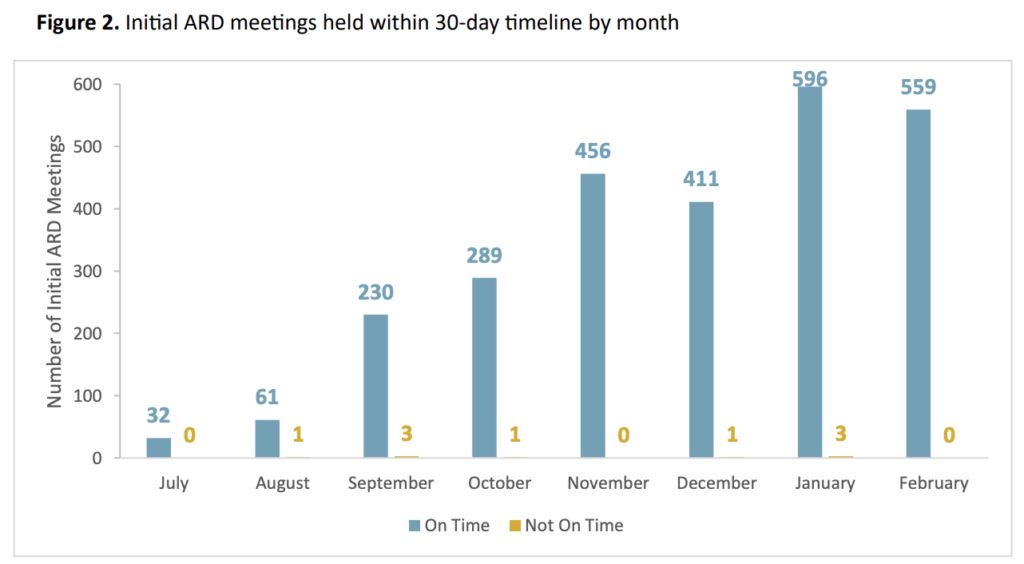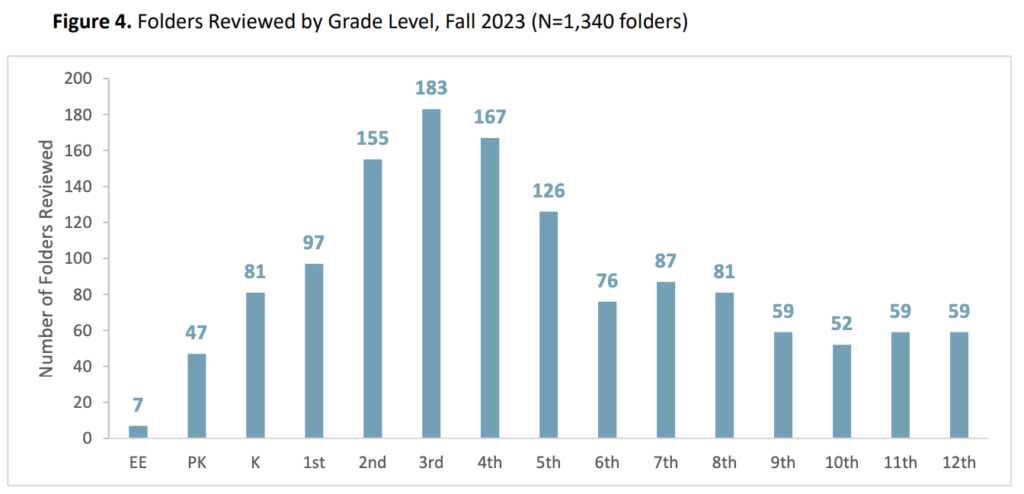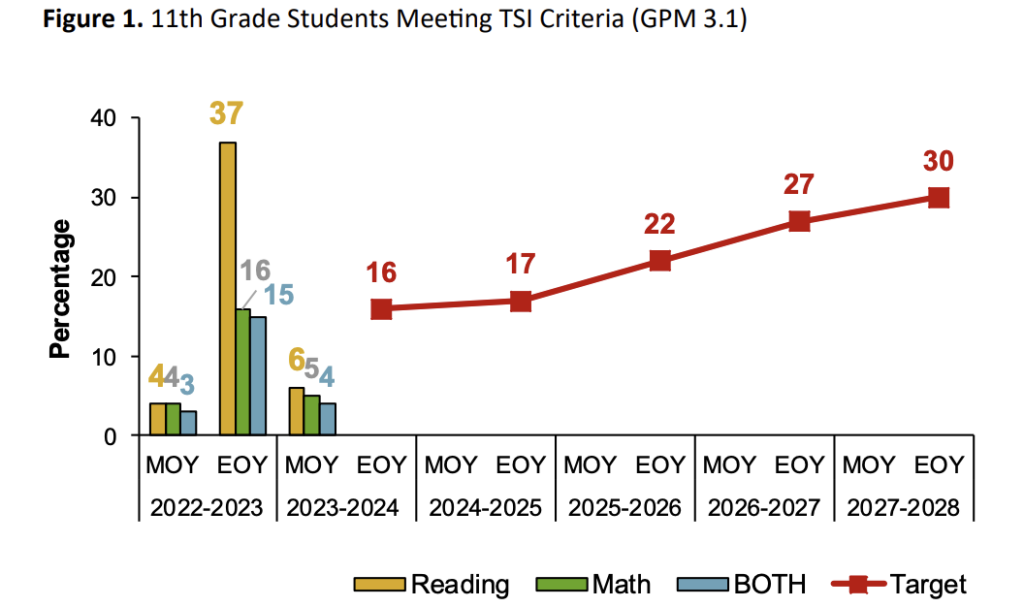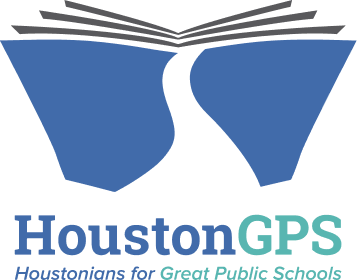Houston HISD Board Meeting Recap 4.11.24
The HISD Board held their April regular board meeting on April 11, 2024. Here’s a recap of the highlights.
HISD is making great progress toward special education compliance but achievement for students with disabilities remains lower than their peers and significant gaps persist even within special education.
Slight progress has been made in college readiness measured by the Texas Success Initiative but middle of year data do not include the bulk of student testing. End-of-year monitoring is needed to provide a complete picture of student progress.
The Board continues to make progress on governance compliance and accountability. Next steps include evaluating the superintendent, setting self-constraints, and community engagement.
BOARD VOTES
All agenda items were approved except for the renewal of a Confucius Institute in the district, which was tabled for the next regular Board meeting in May.
Agenda Item | In Favor | Opposed | Abstained |
Confucius Institute Renewal* | 9 | 0 | 0 |
Helms ES Dual Language Program | 8 | 1 | 0 |
Wharton Dual Language Academy | 8 | 1 | 0 |
Constraint Progress Monitoring Report | 9 | 0 | 0 |
Goal Progress Monitoring Report | 8 | 0 | 1 |
Consent Agenda | 9 | 0 | 0 |
Board Self-Evaluation | 9 | 0 | 0 |
*Vote was for a motion to table the item
STUDENT OUTCOME SPOTLIGHT
HISD is making great progress toward special education compliance but achievement for students with disabilities remains lower than their peers and significant gaps persist even within special education.
The HISD school board monitored progress for both special education (SPED) compliance and student achievement. As initially covered in our agenda highlights for this month, this is a critical discussion for the Board because SPED compliance is one of the exit criteria for the state intervention.
In the past, Superintendent Miles has been clear that compliance was a necessary step before honing further on SPED instructional quality. This is evident in the monitoring results, which illustrate large gains in compliance but much less progress for SPED student achievement. As the district meets federal and state requirements for SPED, we look forward to a greater focus on instruction.
Board Constraint Progress Measure 2.1: The District will increase the percentage of initial eligibility Annual Review and Dismissal (ARD) committee meetings conducted in compliance with federally required timelines from 87% in June 2023 to 100% in June 2024 and maintain 100% compliance through June 2028.


The District is required to hold timely Annual Review and Dismissal (ARD) committee meetings for students with disabilities. Last year, the District failed to comply with timeline requirements for 13% of ARD meetings. This year, the District is 99.6% compliant, with only 9 meetings behind schedule, three of which were late to accommodate parent attendance.
Board Constraint Progress Measure 2.2: The percentage of IEPs reviewed by an independent team from the Special Education Department for compliance and delivery of services will increase from 7% in January 2024 to 20% in June 2028.


ARD committees are tasked with establishing students’ Individual Education Plans (IEPs), which outline the types of services and instructional accommodations each student requires. During the fall, the Office of Special Education Services developed an IEP review process and trained independent unit teams to conduct sample audits at campuses.
Each principal receives a summary of the audit findings, which outlines three focus areas: professional development, monitoring student progress of student performance, and technical assistance. While this year is the first year of implementation, these teams audited 7% of IEPs, which the District plans to scale to 20% over the next five years.
We applaud the district for this progress toward compliance. It is critical that SPED students are receiving the legally mandated support they are entitled to and need to learn. In particular, we believe the new audit process will provide valuable insight for campus leadership to ensure effective compliance and monitoring, allowing greater accountability for special education.
However, compliance is just the first step in meeting the needs of SPED students. Further reporting shows the district has a long way to go to fully support academic achievement for students with disabilities.
Board Goal Progress Measure 4.3: The percentage of students in grades 3 through 8 who receive special education services (SWD) who are projected at Meets Grade Level in reading or math on NWEA MAP will increase from 11% in September 2023 to 26% in May 2028.

The District progress monitors student achievement throughout the year using the NWEA MAP assessment. This is the first year HISD is using this assessment, which means that it does not have comparable data from previous years.
Students receive SPED services if they both have a recognized disability and demonstrate an academic need. Even so, the data show only 12% of SPED students are meeting grade level in reading or math in grades 3-8.

A closer look at the breakdown by student group shows large disparities for Black and Latino students with disabilities compared to their Asian and white peers. During the discussion with Board members, the administration did point out the variation in number of students in each group, which does affect the data analysis.
Even with the smaller number of Asian and white SPED students, disparities of up to 41% warrant very close attention. Moving forward, we would like to see a root cause analysis and a greater emphasis put on how the district plans to close this achievement gap within SPED services.
Slight progress has been made in college readiness measured by the Texas Success Initiative (TSI) by middle-of-year (MOY) but the district will have a more complete picture by end-of-year (EOY).
The Board also monitored college and career readiness based on TSI achievement, which is determined by student scores on the TSI assessment, ACT, or SAT in English and math.


Comparing MOY this school year to last year, the District saw up to a 2% increase in students meeting TSI criteria in both reading and math. While this is minor progress, students with disabilities and emergent bilingual students are still seeing less growth.
Notably, most students meet this particular criteria through the SAT, which is offered for free through the district in the Spring. Because this data does not yet reflect those testers, waiting until EOY would be a better reflection of progress. Although we appreciate monitoring data, we echo board members who encouraged the district to take a closer look at their monitoring calendar to determine the best time to share data in order to fully capture student progress.
Big Picture: Students with disabilities face the largest achievement gap of any student group. The district’s significant improvement in SPED compliance is worthy of celebration and we hope to see it translated into gains in achievement. Even within the SPED population, Black and Latino subgroups face even greater barriers to education, which warrant closer attention from leadership.
BOARD DISCUSSION HIGHLIGHTS
Board members and administration delved even deeper into SPED compliance processes.

Cassandra Auzenne Bandy: What is included in the folder review conducted by the unit teams?
Administration Response: The process is a targeted review, which includes folder items related to the intervention exit criteria. Teams look at timely ARD committee constitution, notice provided to parents, and up-to-date present levels of student performance in IEPs. While this does not cover everything, the department felt like these were the main areas and a good starting point given this is the first time the district has conducted this time of audit.
Cassandra Auzenne Bandy: What common areas of need were identified?
Administration Response: Based on the reviews, areas of strength include conducting ARD meetings in a timely manner and ARD committee participation. Areas of identified improvement often included development of IEPs and reviewing data to document students’ present level of performance, which is needed for IEP implementation.


Angela Lemond Flowers and Audrey Momanaee: How does the administration expect to proceed with compliance reviews now that a process is in place? How often will they conduct them?
Administration Response: The initial development of the process took longer than expected but they expect to be quicker now that they have the framework in place. They plan to conduct audits twice a year moving forward. In order to increase capacity, they also want to support campus leadership in understanding the process so that campuses can review their own compliance. They are looking at conducting reviews onsite in the future alongside campus and leadership.

Rolando Martinez: How are they measuring progress on IEPs?
Administration Response: The folder reviews include ensuring progress is monitoring is being completed by the campus. Parents receive progress reports for IEPs in alignment with student report cards.
The Board continues to focus on quality of instruction for both SPED students and college and career readiness.

Janette Garza Lindner: As the District looks at professional development in SPED, how are they ensuring training is leading to specially designed instruction?
Administration Response: While the folder review includes ensuring IEPs cover specially designed instruction, the district is also training both SPED and general education teachers to distinguish between general Tier 1 instruction (the standard grade level instruction), general accommodations for differentiated instruction provided to general education students, and specially designed instruction, which gets to the heart of individualized needs set out in IEPs. Principals are also trained as part of their observation checks to provide feedback.

Adam Rivon: What analysis is being done for SPED subpopulation achievement? Are the goals being set in the right way to close gaps?
Administration Response: Most SPED students show the most progress in growth rather than grade level achievement. Next month they will be monitoring growth. They do need to close the gap for proficiency but there is a reason that students qualify for services and one of the requirements is an academic need.

Audrey Momanaee: The administration mentioned they write high quality curricula in the TSI monitoring. Have they done an assessment of what they are currently using to save time and resources?
Administration Response: Curricula vary across the district. Some campuses use approved materials and others exercise autonomy to use other resources. The District wants to ensure all campuses have the option of at least three high quality curricula, including one developed by the district. The district developed materials are not costing additional money but are building upon already vetted materials to make sure teachers have all of the resources they need for instruction, especially at the NES campuses.
Time Check: This month, the Board spent around 62% of their meeting time focused on student outcome monitoring, excluding time spent hearing from community speakers. While this meeting represents the bulk of the Board’s student-focused time for the month, the commitment to centering students remains clear and promising.
Why this Matters: High-performing school districts have school boards that spend most of their time focused on student outcomes rather than operations. Lone Star Governance recommends boards spend at least 50% of their time engaged in student outcome monitoring.
OTHER MEETING HIGHLIGHTS
The Board postponed approval of the renewal for the Confucius Institute program.
After Board discussion, questions remained about the timeline for the renewal period, the flow of funding for the program, and the use of the program at various campuses. The Board unanimously decided to table this item until the next regular board meeting in May when they could get more comprehensive information.
The Board continues to make progress on governance compliance and accountability.
Effective Board processes for governance is one of the three exit criteria for the intervention. The Board is using the Lone Star Governance framework to ensure compliance and measure progress toward this criteria. For this quarter’s self-evaluation, the Board demonstrated progress toward compliance based on their establishment and monitoring of student outcome goals and constraints. While the board is already meeting many of the necessary criteria, areas of attention include finalizing the review of policies, establishing Board self-constraints, engaging the community, and conducting an evaluation of the Superintendent, which will be done at the close of the school year.
